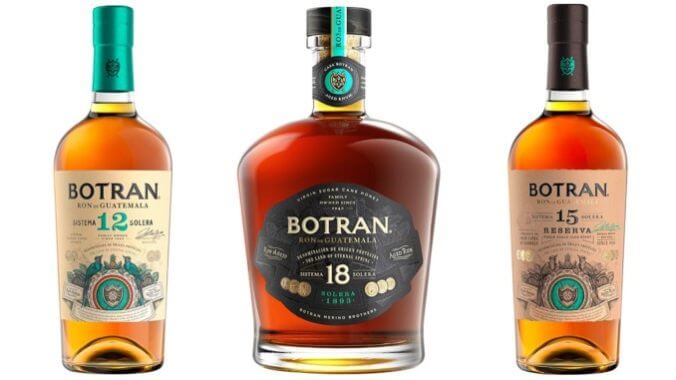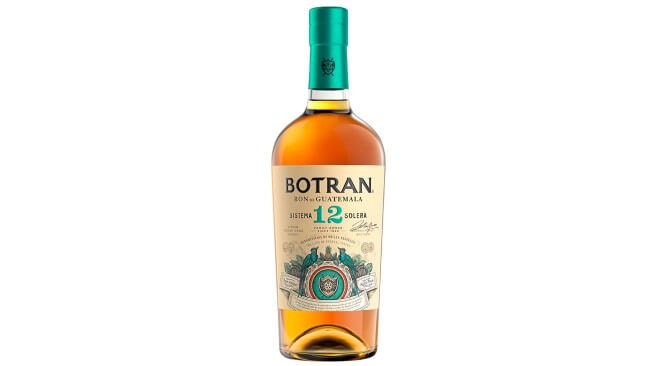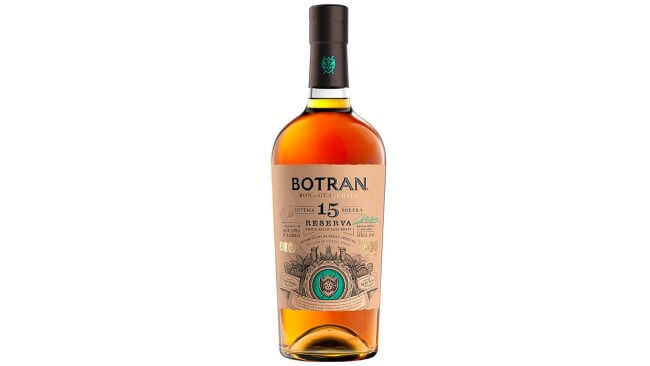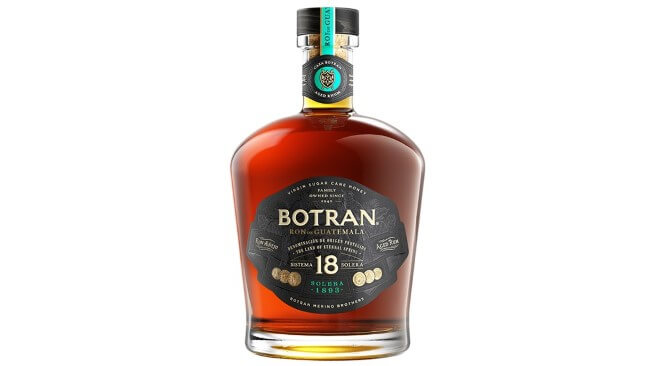Tasting: 3 Guatemalan Flagship Aged Rums from Botran (12, 15, 18)
Photos via Botran
Central American rum has the odd distinction of being quite widespread on the U.S. market, but simultaneously under the radar at the same time, even for many rum geeks. This is perhaps a function of hype and excitement—drinkers who are really into aged rum have a tendency to focus most intently on distilleries making big, bombastic flavor profiles, especially those that include portions of pot-distilled rum in their blends. Most Central American nations that produce rum, on the other hand—Nicaragua, Belize, Panama, etc—tend to make it in a style that reflects Spanish colonialism, which means the use of column rather than pot stills. This results in a lighter, softer rum profile, less dominated by funky esters than distilleries in countries such as Jamaica, Barbados or St. Lucia, which tend to attract more spirit geek attention.
And yet, those aged Central American rums are everywhere in the U.S.—they’re on store shelves, and they’re heavily used in restaurant and bar programs, owing at least partially to the fact that they’re often more affordable. Too often, they’re lumped into one mass as a faceless blob, and I must confess I’ve been guilty of this myself. I haven’t always looked at representatives of each Central American nation as producing unique, interesting rums (or rons), and it’s something I should do a better job of in the future. Particularly after tasting this lineup of flagship rums from Guatemala’s Ron Botran.
The Ron Botran brand has been around for decades, and it’s likewise been in the U.S. for quite a while, albeit through many revisions, redesigns and relaunches. Particularly in the last decade, this brand has had many different labels and looks, and it’s once again hitting shelves with another new set of (pretty attractive) labels. Overall, the lineup of flagships has been nicely simplified, but in truth the rum in the bottles is anything but simple in terms of its production process.
Botran is a product of Industrias Licoreras de Guatemala, the same distillery that produces the well-known line of Zacapa “premium” rums. This might be something of a red flag to rum geeks, as the Zacapa brand has been a bit of a lightning rod for controversy and conversation in recent years, owing to its well-documented use of additional sweeteners, post distillation. However, despite being distilled by the same facility, Botran can boast a significantly different pedigree.
For one, the company explicitly states that none of its brands feature “added sugar, glycerin or vanilla.” Its aged column still rums are produced via a version of the traditional solera system, but again here there’s an interesting deviation via the use of several different styles of cask. In addition to the traditional reused American oak whiskey casks, Botran also makes use of recharred American oak casks, along with casks that previously held sherry and port wine. Together, all of these casks form a complex solera system, with different types of casks being highlighted more strongly in various brands. It’s also interesting to note the company’s various progressive bonafides—they’re certified sustainable on all levels of production, and were the first rum to earn ISCC PLUS certification, while also having a Carbon Neutral Certification from SGS. The company can also boast three women as its Master Blenders: Magda López, Yazmín Chapeton and Leslie Taracena. These are the kinds of plaudits one doesn’t typically associate with older rum brands from Central America.
With that said, some of the invitation to deception commonly found among solera brands is still present here, most notably the naming convention for each brand in the flagship series, as “No. 12,” “No. 15,” “No. 18,” etc. The company is by no means stating that all of the contents of each bottle are 12, 15 and 18 years old, but they’re not going to dissuade a customer examining a bottle at the package store from assuming that, either. But yes, if it wasn’t clear: A bottle like Ron Botran No. 12 is able to be offered at $25 in the U.S. because it’s a blend of rums aged 5-12 years, rather than a bottle of 12-year-old rum. As long as the consumer is aware of that, it still represents a solid value.
Now with all that said, let’s get to tasting this flagship lineup of Guatemalan aged rums.
Ron Botran No. 12ABV: 40% (80 proof)
MSRP: $25

As stated above, this is a blend of 5-12 year old rums, aged via the solera system in three types of casks: American whiskey, “medium toasted American whiskey,” and sherry casks.
On the nose, this one is sweet and inviting, with notes of molasses cookie and chocolate ganache, along with a fruitiness suggesting caramelized plantain. You get a little oak and slight booziness, but overall it’s a sweet nose, with a healthy dose of vanilla extract on repeat visits. On the palate, I’m getting lots of brown sugar and a little banana, with mild ethanol. There’s a little cocoa, and it does read as sweet, but that sweetness is offset by a creeping dryness that comes along 20 or 30 seconds after the sip, with a little oakiness rounding things out.
All in all, this strikes me as notably more complex in its flavors than a lot of the relatively younger aged rum blends it’s going to be competing against on the shelf in the $25 range. It avoids the feeling of artificiality I sometimes get in younger aged column still, Spanish-style rum blends, and is nowhere near cloying. The overall effect is extremely mixable and versatile—you could use this as a base (or an inclusion) in most classic rum mixed drinks and it would shine through just fine. I think it would be particularly good with just a little tonic and lime juice.
Ron Botran No. 15ABV: 40% (80 proof)
MSRP: $33

Ron Botran No. 15 is a blend of rums aged 5-15 years—not a big difference from the No. 12 on paper, but it notably also includes rums matured in port casks, which are not present in the No. 12. Likewise, the MSRP is only $8 higher, so one probably can’t really expect this brand to be all that radically transformed.
On the nose, I’m getting more delicate baking spices and caramelized sugars in comparison to the No. 12, along with a profile that finds more fruity impressions. There’s a suggestion of dark fruit syrup, something in the realm of blackberry and currant. On the palate, it actually seems a little bit more dry than the No. 12, with a bit more balancing oak, but also more fruit and earthiness. This leads to the profile being a bit more complex, and slightly vinous in nature, with dried fruit and oak that slowly reveals tobacco and just a touch of cigar smoke.
Overall, this is a more elegant expression of the brand’s flavors than found in the No. 12, and it actually is more significantly different and unique than I expected it might be.
Ron Botran No. 18ABV: 40% (80 proof)
MSRP: $45

Ron Botran No. 18 is, as you might have guessed by this point, a blend of rums aged 5-18 years, with a somewhat more significant bump in MSRP. Like the No. 15, it includes rums matured in port casks in the blend. Rum geeks likely would have appreciated at least a little bump in proof point here, but it remains 40% ABV (80 proof).
On the nose, the No. 18 features a similar dark fruitiness, which becomes quite vinous over time, suggesting grape or raisin. In fact, of the three this is the first entry that really has me thinking of sherry—the nose has a dried fruit quality and slightly oxidized nuttiness that is calling oloroso to mind. At the same time, the nose doesn’t really suggest a ton of sweetness because there’s also a big oak presence. On the palate, rich molasses cookie melds with a slightly bitter and spicy oak edge, along with tobacco and pithy dark fruit jam—again slightly bitter, met by a degree of roastiness. Maple syrup also shows up in flashes, though any sweetness to that impression is balanced by oaky dryness.
All in all, it’s a pretty significant evolution from where we started with the Ron Botran No. 12. As a whole, I am pretty impressed with this lineup and the ambition it represents—not a lot of brands are working all these different casks into their flagship lineup, and presenting these rum blends without added sweeteners is the right way to go. These are versatile, nicely complex column still aged rums, at a fair price point. What’s not to like?
Jim Vorel is a Paste staff writer and resident beer and liquor geek. You can follow him on Twitter for more food and drink writing.